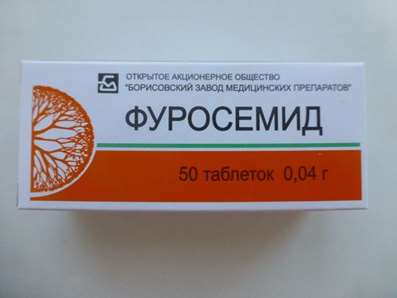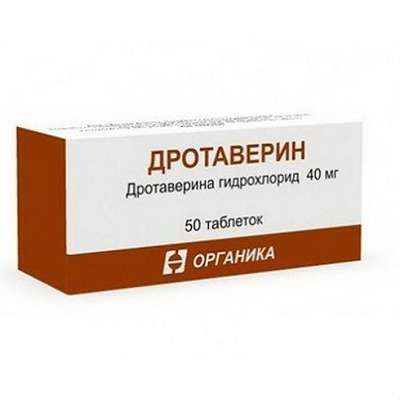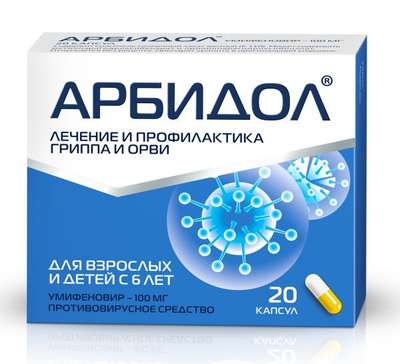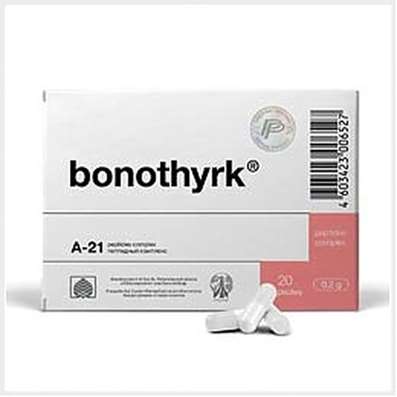Instruction for use: Seebri Breezhaler
I want this, give me price
Active substance: Glycopyrronium bromide
ATX Code
A03AB02 glycopyrronium bromide
Pharmacological group
M holinoblokatorov [m-Cholinolytics]
The nosological classification (ICD-10)
J44 Other chronic obstructive pulmonary disease
Allergic bronchitis, Bronchitis asthma, Asthmatic bronchitis, wheeze bronchitis, Bronchitis is an obstructive, bronchi disease, Shortness of sputum in acute and chronic respiratory diseases, Cough in inflammatory diseases of the lung and bronchus, Reversible airflow obstruction, Reversible obstructive airway disease, Obstructive bronchitis disease, Obstructive lung disease, Obstructive bronchitis, Spastic bronchitis, Chronic lung disease, Chronic nonspecific lung diseases, Chronic obstructive pulmonary disease, Chronic obstructive bronchitis, Chronic obstructive airway disease, Chronic obstructive pulmonary disease, Restrictive lung pathology
Composition
Capsules with powder for inhalation 1 caps.
active substance:
glycopyrronium base 50 mcg
(Equivalent to 63 mcg glycopyrronium bromide)
Excipients: lactose monohydrate - 24.9 mg; magnesium stearate - 0.037 mg
capsule shell: hypromellose - 45.59 mg; Water - 2.7 mg; Carrageenan - 0,42 mg; sodium chloride - 0.18 mg; dye "sunset" yellow (E110) - 0,12 mg; black ink (shellac, black iron oxide colorant, propylene glycol, sodium hydroxide)
The drug forms
Capsules: solid ą3 with transparent lid and body orange, marked by a black stripe on the lid and «GPL50» inscription in black ink on a black stripe on the body "?." The contents of capsules - powder white or nearly white.
pharmachologic effect
bronchodilatory, m-holinoliticheskoe.
pharmacodynamics
Seebri® Breezhaler® inhaled long-acting drug. The mechanism of action glycopyrronium bromide (holinoblokator-m) based on blocking the bronchoconstrictor action of acetylcholine on smooth muscle cells of the airways that leads to a bronchodilatory effect. In humans identified five subtypes of muscarinic receptors (M1-5). It is known that only M1-3 subtypes involved in the physiological function of the respiratory system. Glycopyrronium bromide, as a muscarinic receptor antagonist, it has a high affinity receptor subtype M1-3. Thus glycopyrronium bromide has 4-5 fold greater selectivity and M1- M3 subtype receptors compared with the M2 receptor subtype. This leads to rapid emergence of therapeutic effect after inhalation of the drug, which is confirmed by clinical studies. The duration of action of the drug after inhalation due to long-term maintenance of therapeutic concentrations of the drug in the lungs, which is confirmed by a longer T1 / 2 of the drug after inhalation application in comparison with / in the introduction. Numerous clinical studies have shown that treatment with glycopyrronium bromide in patients with COPD significantly improved pulmonary function (evaluation carried out by changing the forced expiratory volume in 1 minute (FEV1): the therapeutic effect occurs within the first 5 minutes after inhalation, with a significant increase in FEV1 from baseline in the range 0,091 to 0,094 liters, bronchodilator effect of glycopyrronium bromide inhalation after lasting longer than 24 hours. According to clinical studies, no evidence of tachyphylaxis to the bronchodilator effect of the drug on a background of regular use up to 52 weeks.
No changes were observed in heart rate and duration of the QTc interval during treatment with the drug Seebri® Breezhaler® a dose of 200 mcg in patients with COPD.
Pharmacokinetics
Absorption. After inhalation of glycopyrronium bromide is rapidly absorbed into the systemic circulation and reaches Cmax in plasma after 5 min. The absolute bioavailability of glycopyrronium bromide inhalation after the application of about 40%. About 90% of systemic exposure glycopyrronium bromide accounts for absorption in the lung and 10% - on the absorption in the gastrointestinal tract. The absolute bioavailability following oral administration of glycopyrronium bromide is estimated at 5%. Against the background of regular inhalations (1 per day) glycopyrronium bromide equilibrium state is achieved within 1 week. Cmax glycopyrronium bromide in the equilibrium state (1 inhalation 50 g per day) and glycopyrronium bromide concentration in blood plasma just before the next dose equal to 166 and 8 pg / ml, respectively. compared to the first administration of excretion in equilibrium suggests that systemic accumulation is independent of dose in the dose range 25-200 ug.
Distribution. After the on / in the Vss glycopyrronium bromide was 83 L and Vd in the terminal phase - 376 l. The apparent Vd in the terminal phase after inhalation was 7310 liters, reflecting a slower elimination of the drug after inhalation. In vitro glycopyrronium bromide connection with human plasma proteins was 38-41% at a concentration of 1-10 ng / ml. These concentrations are at least six times higher than those in the state of equilibrium to be achieved in the plasma during treatment with the drug at a dose of 50 mg 1 time per day.
Metabolism. It was noted that the hydroxylation glycopyrronium bromide leads to the formation of different mono- and bis-hydroxylated metabolites, and the direct hydrolysis leads to the formation of carboxylic acid derivatives (M9). Studies in vitro have shown that CYP enzymes contribute to oxidative biotransformation glycopyrronium bromide. Hydrolysis to M9, apparently catalyzed by a family of enzymes, cholinesterase. Since studies in vitro showed no metabolism of the active substance in the lungs and M9 contributes insignificantly to the circulation (4% of the Cmax and AUC glycopyrronium bromide) after / in the introduction, it is assumed that M9 formed from absorbable from the gastrointestinal tract (after inhalation) fractions acting presistemnogo substance by hydrolysis and / or during the initial passage through the liver. After inhalation, or on / in the M9 minimal amount only been detected in urine (≤0,5% injected dose). Glucuronic conjugates and / or sulfates glycopyrronium bromide was found in human urine following repeated inhalation in an amount of about 3% of the dose. in vitro inhibition studies demonstrated that glycopyrronium bromide not to participate meaningfully in the inhibition of isoenzymes SYP1A2, CYP2A6, CYP2C8, CYP2C9, CYP2C19, SYP2D6, of CYP2E1 and CYP3A4 / 5, transporters MDR1, MRP2 and MXR and transporters OATR1V1, OATR1V3, OAT1, OAT3, OST1 or OST2. Studies in vitro enzyme induction showed no significant induction of glycopyrronium bromide of any of the cytochrome P450 isoenzymes tested, as well as in respect of UGT1A1 and transporters MDR1 and MRP2.
Withdrawal. Withdrawal glycopyrronium bromide kidneys 60-70% of total plasma clearance, 30-40% is excreted in other ways - in the bile or by metabolism. Following single and repeated inhalation glycopyrronium bromide in a range from 50 to 1 200 mg once a day to healthy volunteers and patients with COPD mean renal clearance was within 17,4-24,4 l / h. Active tubular secretion contributes to the renal excretion of glycopyrronium bromide. Up to 20% of the dose found in the urine in unchanged form. The plasma concentration of glycopyrronium bromide is reduced polyphase. Average final T1 / 2 is longer after the inhalation route of administration (33-57 h) than after i / v injection (6.2 hours) and oral administration (2.8 hours). Nature suggests elimination prolonged absorption in the lungs and / or penetration of glycopyrronium bromide in the systemic circulation and during the 24 h after inhalation. Patients with COPD systemic exposure, as well as the total urinary excretion of glycopyrronium bromide in equilibrium increased proportionally with dose in the range of 50 to 200 micrograms.
Special patient groups
Population pharmacokinetic analysis of data in patients with COPD showed that body weight and age are not factors affecting the inter-individual differences in the systemic exposure of the drug. Seebri® Breezhaler® drug at a dose of 50 mg 1 time per day can be used safely at any age and at any body weight.
Sex, smoking, baseline FEV1 do not have a visible effect on the systemic exposure glycopyrronium bromide.
Abnormal liver function. Clinical studies in patients with hepatic impairment have not been conducted. Excretion of glycopyrronium bromide is mainly due to excretion by the kidneys. It is assumed that worsening liver metabolism glycopyrronium bromide does not lead to a clinically significant increase in systemic exposure.
Impaired renal function. Systemic exposure glycopyrronium bromide depends on the state of renal function. A moderate increase in total systemic exposure (AUC) to 1.4 times was observed in patients with impaired renal and mild to moderate severity function and up to 2.2-fold in patients with impaired renal function, severe or end-stage renal disease. Using population pharmacokinetic analysis led to the conclusion that patients with COPD and renal dysfunction and mild to moderate severity (assessed by glomerular filtration rate (GFR ≥30 ml / min / 1.73 m2) Seebri® Breezhaler® drug can be used in the recommended doses.
Indications of Seebri® Breezhaler®
Maintenance treatment of bronchial conduction disturbances in patients with chronic obstructive pulmonary disease.
Contraindications
Hypersensitivity to glycopyrronium bromide or any other components of the drug;
concomitant use with inhaled drugs containing other m-holinoblokatory;
galactose intolerance, lactase deficiency or glucose-galactose malabsorption (product contains lactose);
age 18 years.
Precautions: angle-closure glaucoma; diseases accompanied by urinary retention; severe renal insufficiency (glomerular filtration rate below 30 mL / min / 1.73 m2), including end-stage renal disease requiring hemodialysis (Sibri® Brizhaler® medication should be used only if the expected benefit outweighs the potential risk); Unstable coronary artery disease; history of myocardial infarction; cardiac arrhythmias; lengthening the interval QTc (QT corrected> 0.44 sec).
Pregnancy and breast-feeding
Preclinical studies have shown no teratogenic effects from the drug after inhalation application. Due to the lack of clinical data on the use of the drug Seebri® Breezhaler® in pregnant women the drug can be used during pregnancy only if the intended use of the benefit to the patient outweighs the potential risk to the fetus.
It is not known whether the glycopyrronium bromide passes into breast milk in humans. Use of the drug Seebri® Breezhaler® breastfeeding should be considered only if the benefit to the mother outweighs any potential risk to the baby.
No reproductive toxicity studies, no other studies on animals do not suggest that the drug may affect fertility in men or women.
Side effects
The safety profile of the drug Seebri® Breezhaler® characterized by symptoms related to m-anticholinergic action, including dry mouth (2.2%), while the other effects on the gastrointestinal tract and signs of urinary retention were infrequent.
Adverse drug reactions (ADRs) associated with the local tolerability, included throat irritation, nasopharyngitis, rhinitis and sinusitis. In the recommended doses, the drug Sibri® Brizhaler® no effect on blood pressure and heart rate.
Safety and tolerability Seebri® Breezhaler® preparation was studied when applied at 1353 COPD patients at the recommended dose of 50 mg 1 time per day. Of these, 842 patients were treated for at least 26 weeks and 351 - at least 52 weeks.
The following criteria are used to assess the frequency of ADRs: very common (≥1 / 10); commonly (≥1 / 100, <1/10); uncommon (≥1 / 1000, <1/100); rare (≥1 / 10,000, <1/1000); very rare (<1/10000).
Infectious and parasitic diseases: often - nasopharyngitis; rarely - rhinitis, cystitis.
On the part of metabolism and nutrition: rarely - hyperglycemia.
Mental disorders: often - insomnia.
From the nervous system: often - headache; rarely - hypoesthesia.
From the heart: rarely - atrial fibrillation, palpitations.
The respiratory system, organs, thoracic and mediastinal disorders: uncommon - congestion in the sinuses, productive cough, throat irritation, nasal bleeding.
From the digestive system: often - dry mouth, gastroenteritis; infrequently - indigestion, dental caries.
Skin and subcutaneous tissue disorders: rare - skin rash.
On the part of the musculoskeletal and connective tissue disorders: rarely - pain in the limbs, the pain of the skeletal muscles of the chest.
On the part of the kidney and urinary tract: often - urinary tract infection; rarely - dysuria, urinary retention.
General disorders and administration site at: rarely - fatigue, asthenia.
In a clinical study of 12 months duration of the following additional adverse events were identified that met more frequently when using the drug Seebri® Breezhaler® compared to placebo: nasopharyngitis (9 vs. 5.6%), vomiting (1.3 vs. 0.7%) , myalgia (1.1 vs. 0.7%), neck pain (1.3 vs. 0.7%), diabetes (0.8 vs. 0%).
NLR, the details of which were obtained during the post-marketing studies and according to the literature. Since the data are reported voluntarily from a population of uncertain size, it is not possible to determine their frequency. Angioedema (frequency unknown).
Special patient groups
In elderly patients over the age of 75 years, the incidence of urinary tract infections and headaches when using the drug Seebri® Breezhaler® was higher than in the placebo group (3 vs. 1.5% and 2.3 vs 0%, respectively).
If any of the above instructions or side effects are compounded by the patient noticed any other side effects not mentioned in the instructions, you should inform your doctor.
Interaction
Concomitant use of glycopyrronium bromide and indacaterol inhalation agonist beta2-adrenergic receptors, does not affect the pharmacokinetics of both drugs.
In clinical studies in healthy volunteers, cimetidine, an inhibitor of transporters of organic cations affecting the renal clearance of glycopyrronium bromide, increased the total exposure (AUC) glycopyrronium bromide by 22% and reduced renal clearance by 23%. Based on these figures, no clinically significant interaction is expected, while the use of the drug Seebri® Breezhaler® with cimetidine or other inhibitors of transporter of cations.
Studies in vitro have shown that the drug Sibri® Breezhaler® probably does not affect the metabolism of other drugs.
The inhibition or induction of the metabolism of glycopyrronium bromide does not lead to significant changes in systemic exposure of the drug.
Dosing and Administration
Inhalation.
The preparation is a capsule with the powder for inhalation, which should only be used for inhalation through the mouth with a special device for inhalation Breezhaler® that comes in the package. The drug can not be taken orally. Capsules for inhalation with powder in the blister should be stored and retrieved from it immediately before use.
The recommended dose Seebri® Breezhaler® is 50 mcg (contents of 1 capsule.) 1 time per day. Inhalation drug is administered daily one time a day in the same time. In the case of inhalation skip the next dose should be taken as soon as possible. Patients should be instructed to not take more than 1 dose (50 mcg) per day.
Before the start of the drug Seebri® Breezhaler® patients should be instructed in the proper use of the inhaler.
In the absence of whether the patient uses the drug to improve respiratory function to be sure, right. The drug should breathe and not to swallow.
Special patient groups
Renal insufficiency. In patients with impaired renal mild to moderate function can be used the recommended dose of the drug Seebri® Breezhaler®. In patients with impaired renal function, severe or end-stage renal disease requiring hemodialysis, the drug Seebri® Breezhaler® should be applied at the recommended dose only if the expected benefit outweighs the potential risk.
Liver failure. Special clinical studies in patients with hepatic impairment have not been conducted. The drug Seebri® Breezhaler® excreted mainly by renal excretion, therefore, a significant increase in exposure in patients with hepatic impairment is not expected. In patients with impaired liver function can be used the recommended dose of the drug Seebri® Breezhaler®.
Elderly patients. The drug Sibri® Breezhaler® can be used at the recommended dose in patients aged 75 years and older.
Instructions for use inhalation device Breezhaler®
Each pack of the drug contains Seebri® Breezhaler®:
- 1 Breezhaler ® inhalation device;
- Blisters with capsules with powder for inhalation.
Capsules with powder for inhalation can not be taken orally.
Breezhaler® inhalation device in the packaging, is intended for use only in conjunction with capsules of the drug.
Capsules for inhalation, are in the package can only be used Brizhaler® inhalation device.
Do not use the drug capsules with any other inhalation device and in turn Brizhaler® not use other drugs for inhalation.
After 30 days of use Breezhaler® should be discarded.
Using inhaler
1. Remove the cover.
2. Open Breezhaler®: To open the inhaler should firmly take his base and tilt the mouthpiece.
3. Prepare capsule: separate 1 bl. of blister packing by tearing it along the perforations; take one blister and remove the protection film to release the capsule; do not squeeze the capsule through the protective film.
4. Remove capsule capsules should be stored in the blister, and only removed immediately before use; wipe hands dry and remove the capsule from the blister; not swallow a capsule.
5. Insert capsule in Breezhaler®: put the capsule in the capsule chamber; never put a capsule directly into the mouthpiece.
6. Close Breezhaler®: tightly inhaler; when it will close until the end, should be clicked.
7. Pierce the capsule: Brizhaler® hold in an upright position so that the mouthpiece faces upward; simultaneously press until the end of the two buttons; by puncturing the capsule must be clicked; no key is pressed for piercing the capsule more than once.
8. Fully release button inhaler Breezhaler® on both sides.
9. Exhale; before inserting the mouthpiece in your mouth, making a full exhalation; I never blow into the mouthpiece.
10. Inject the drug: Breezhaler® hold in his hand so that the buttons were left and right (and not above and below); invest Breezhaler® inhaler mouthpiece in your mouth and lips tight squeeze around him; make a quick, steady, deep breath as much as possible; do not press the button of the lancing device.
11. Pay attention. When inhaled through the inhaler should hear the characteristic rattling sound generated by the rotation of the capsule in the chamber and powder spraying. The patient may feel the sweet taste of the drug. If a rattling sound is heard, it can mean that the capsule is stuck in the inhaler chamber. In this case, open the inhaler and carefully release the capsule by tapping the base of the device. To release the capsule should not press the button for piercing the capsule. If necessary, repeat steps 9 and 10.
12. Hold your breath: if inhaled can hear a distinctive sound, hold your breath as long as possible (so as not to feel discomfort), and at the same time pull the mouthpiece out of his mouth; then exhale. Open Breezhaler® and see not stayed there in a capsule powder. If the powder remained in the capsule close Breezhaler® and repeat steps 9-12. Most people can empty the capsule 1 or 2 inhalations. For some people in a short time after drug inhalation is marked cough should thus not excited. If the powder in the capsule is left, then the patient has received a full dose of the drug.
13. Remove the capsule after taking a daily dose Seebri® Breezhalerre jecting the mouthpiece, remove the empty capsule by tapping on the inhaler, and throw it away. Close the mouthpiece of the inhaler Seebri® Breezhalerand close the lid. Do not store the capsules in the inhaler Seebri® Breezhaler
It is necessary to remember the following:
Do not swallow capsules with powder for inhalation.
Use only Breezhaler® located in the package.
The capsules should be stored and retrieved in a blister pack immediately before use.
Never put the capsule into the mouthpiece of the inhaler Breezhaler®.
Do not press the lancing device more than once.
Never blow into the mouthpiece of the inhaler Breezhaler®.
Always pierce the capsule before inhalation.
Do not wash Breezhaler®. Keep it dry (see. How to clean Breezhaler®).
Do not disassemble Breezhaler®.
Since the new packaging of the drug for inhalation capsules always use new Breezhaler® located in the package.
Do not store the capsules in the inhaler Breezhaler®.
Always keep the blisters with capsules and Breezhaler® in a dry place.
Additional Information
In very rare cases, a small amount of the contents of the capsules can get into the mouth.
Do not worry when inhaling or swallowing the drug.
When piercing the capsule more than once increases the risk of breakage.
How to clean Breezhaler®
Clean Breezhaler® once a week. Wipe the mouthpiece inside and outside with a clean dry cloth. Never use water to clean the inhaler Seebri® Breezhaler®. Keep it dry.
Overdose
No data on drug overdose Seebri® Breezhaler®.
Patients with COPD, regular inhalational administration formulation Seebri® Breezhaler® a total dose of 100 and 200 mg 1 time per day for 28 days was well tolerated.
Acute intoxication if accidentally swallowed the capsule formulation Seebri® Breezhaler® unlikely because of the low bioavailability of glycopyrronium bromide when administered orally (about 5%).
Cmax plasma levels and overall systemic exposure after the on / in the 150 micrograms glycopyrronium bromide (equivalent to 120 micrograms glycopyrronium) in healthy volunteers was about 50 and 6 times higher, respectively, than the Cmax plasma levels and overall systemic exposure at steady state is achieved when using the drug Seebri® Breezhaler® inhalation at recommended doses (50 mg 1 time per day). Signs of overdose is not detected.
special instructions
Seebri® Breezhaler® drug is not recommended for the relief of acute bronchospasm episodes.
hypersensitivity Reactions
cases of hypersensitivity reactions have been reported immediately after the type of the drug Seebri® Breezhaler®. If there are signs that the development of allergic reactions, including angioedema (including difficulty breathing or swallowing, swelling of the tongue, lips and face), hives or skin rash, the drug must cancel and choose an alternative therapy.
paradoxical bronchospasm
As in other cases, inhalation therapy, the use of the drug Sibri® Brizhaler® may result in paradoxical bronchospasm that may be life-threatening. In the case of paradoxical bronchospasm drug application Seebri® Breezhaler® should be discontinued immediately and alternative therapy is applied.
M-anticholinergic effect
Like other m-anticholinergic drugs, drug Seebri® Breezhaler® should be used with caution in patients with narrow-angle glaucoma or urinary retention.
Patients should be informed of the signs and symptoms of an acute attack of angle-closure glaucoma and the need to stop using the product Seebri® Breezhaler® and immediately inform your doctor in case of any of these signs or symptoms.
Severe renal insufficiency
Patients with impaired renal function (GFR less than 30 mL / min / 1.73 m2), including patients with end-stage disease requiring hemodialysis, should be carefully monitored for the possible development of adverse drug reactions. Seebri® Breezhaler® drug for the maintenance treatment of patients with COPD. Due to the fact that in the general population of COPD patients significantly prevail over the age of 40 years, when using the drug in patients under 40 years is required spirometric confirmation of the diagnosis of COPD.
Effects on ability to drive and use machines. The drug Seebri® Breezhaler® not have a negative impact on the ability to drive vehicles, machinery.
release Form
Capsules for powder inhalation with 50 ug. The blister polyamide / aluminum / PVC and aluminum foil, 6 pcs. 1, 2, 4 or 5 plaques. with the device for inhalation (Breezhaler®) in a carton box.
Multipack. 3 packs of 5 bl. together with a device for inhalation (Breezhaler®) 4 4 packs Bl. with the device for inhalation (Breezhaler®) or 25 packs of 1 bl. in with the device for inhalation (Breezhaler®).
Conditions of supply of pharmacies
On prescription.
Storage conditions
In a dry place at a temperature no higher than 25 ° C.
Keep out of the reach of children.
Shelf-life
2 years.
Do not use beyond the expiration date printed on the package.

 Cart
Cart





